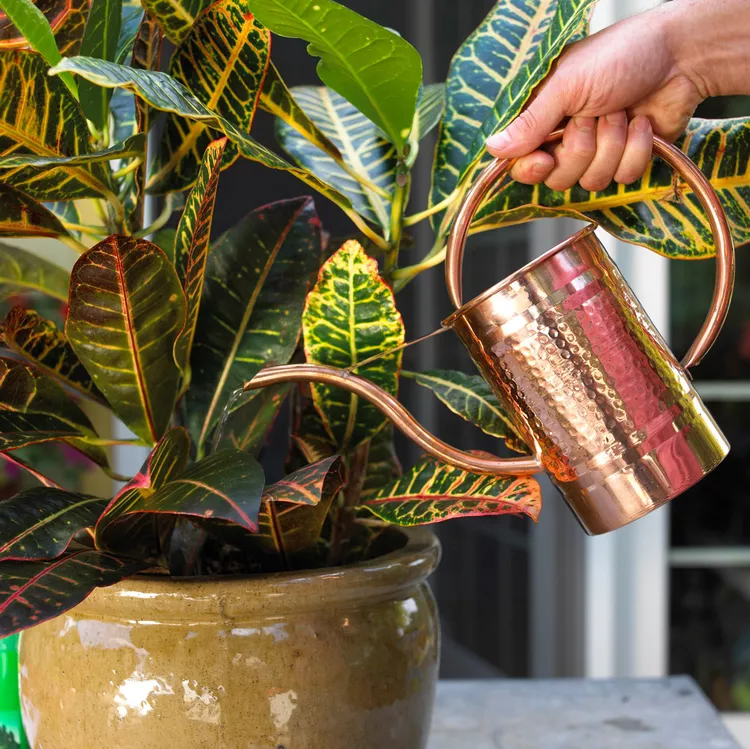It can be tricky to figure out what’s wrong with a previously green and gorgeous houseplant that starts to look unhealthy. Could the culprit be a disease or something like temperature extremes or a nutrient problem? If you’re wondering why your plant leaves are turning brown, it may be a sign that something is off with your houseplant’s living conditions. Although browning on the foliage can happen for a number of reasons, the most likely causes are the way you’re watering, the amount of humidity around the plant, and too much fertilizer in the potting soil. Here’s how to remedy each of these common houseplant problems that cause brown tips on plants.
1. Inconsistent Watering Habits
Brown tips on houseplant leaves are often an indication that you need to rethink the way you’re watering. When a plant gets overwatered, then dries out too much before the next watering, and then maybe gets just a drizzle, that’s a recipe for brown leaves. With the exception of succulents, which need a light hand with the watering can, most indoor plants prefer a steady supply of moisture. Instead of giving it a drenching one time, then a little bit next time, the best way to water a houseplant is consistently. And it’s always a good idea to keep adding water until you see it run out the drainage holes. Then, make sure to empty the saucer so the pot doesn’t stand in wetness, which will rot the roots and cause a whole new set of problems.
Alternatively, you can bottom water your houseplants by setting their pot into a couple of inches of water and letting it sit for 10 minutes or so until it soaks up moisture through the drainage hole. Then, move the pot back to its regular spot on a saucer. If you tend to overwater your plants, this is an especially good technique to use because once the soil is damp enough, it won’t soak up more water.
2. Lack of Humidity
Brown tips on plants could also be an indication of too little moisture in the air. Many common houseplants are native to jungle conditions so if your home is very dry, give your plants a daily misting especially during winter months. Grouping houseplants together can also help keep humidity levels up. Boost the moisture even more by setting their pots on top of a layer of pebbles in a shallow tray. Then, add water just to the tops of the pebbles (or rim of the tray). As the water evaporates, it’ll create a humid micro-climate to keep leaves looking their best. Add more water as needed.
3. Salt Build-Up in the Soil
Brown leaf tips can also indicate a buildup of salts from fertilizers over time or from softened water. Most potted plants do need a little fertilizer once in a while so they have all the nutrients they need to grow. But just like our own bodies and vitamins, remember that a little goes a long way and more is not necessarily better. Even when you’re feeding your plants just the right amount, salts do tend to accumulate in the potting mix (not adding enough water to drain out the bottom makes it worse). That's one reason it’s a good idea to repot with fresh soil every couple of years. Softened water can also turn the leaf tips brown, so consider using distilled or filtered water to keep your plants happy.
Once you start to address the plant leaves turning brown, your plant should start to grow new, healthy foliage. As for the leaves that still have brown tips, you can snip the dead parts away with a pair of scissors without hurting the plant. For some plants that have long, strap-like foliage, such as dracaena or spider plant, make your cuts at an angle to imitate the natural shape of the leaves. That way, the plant will look almost as good as new until fresh foliage has had a chance to fill in.




















